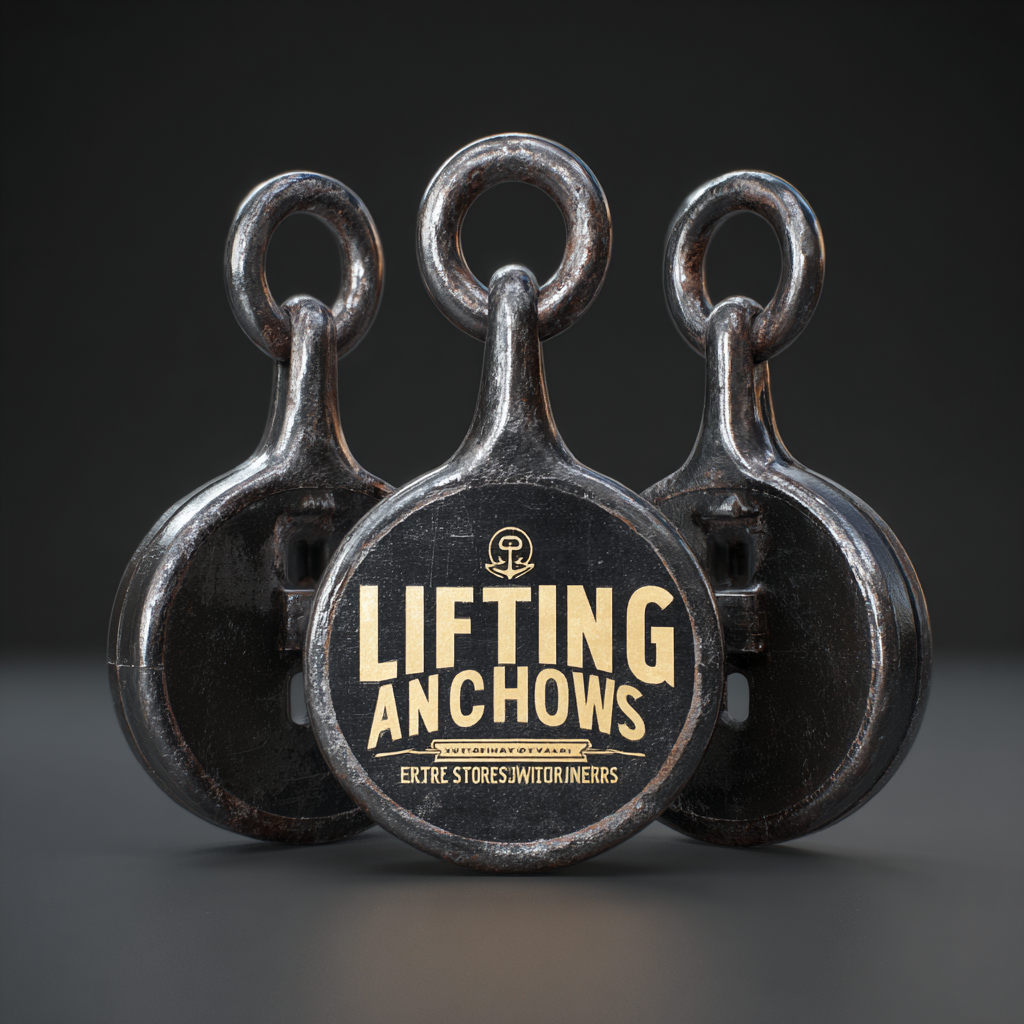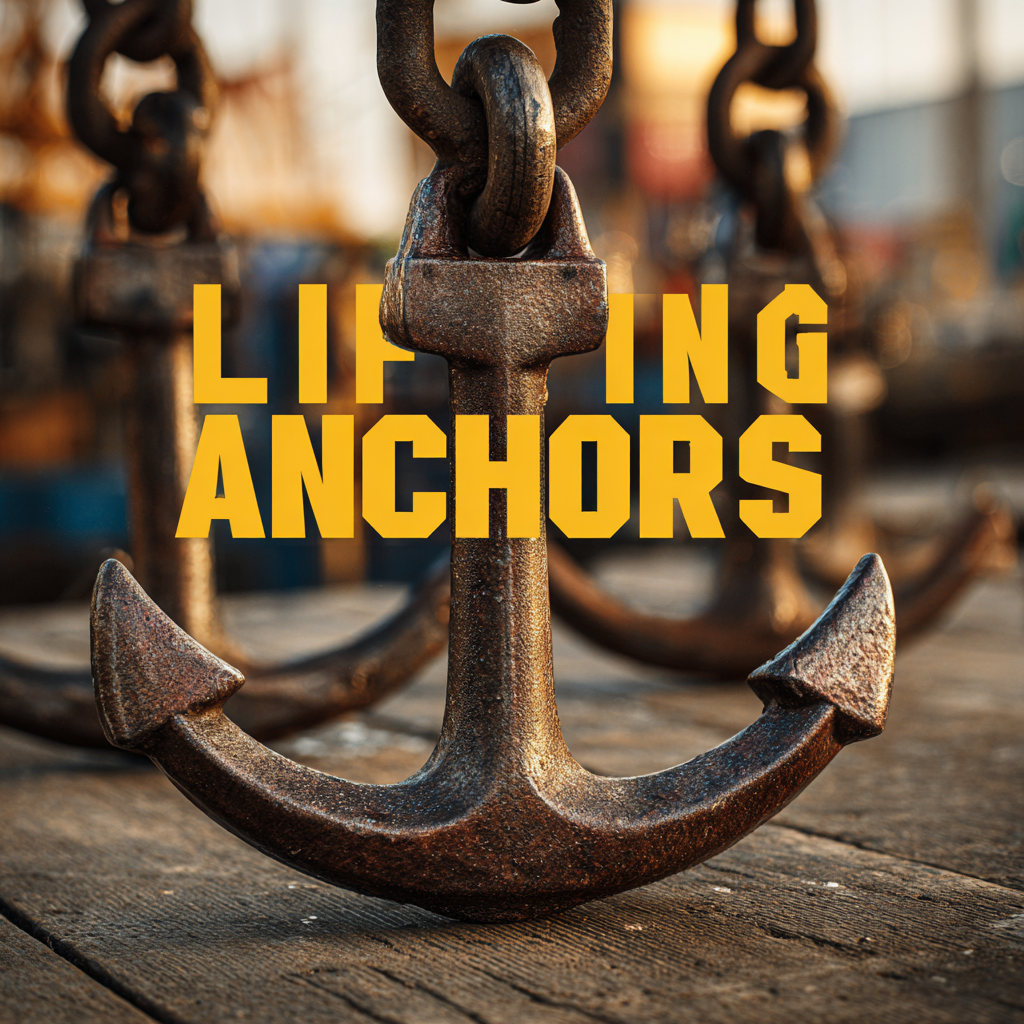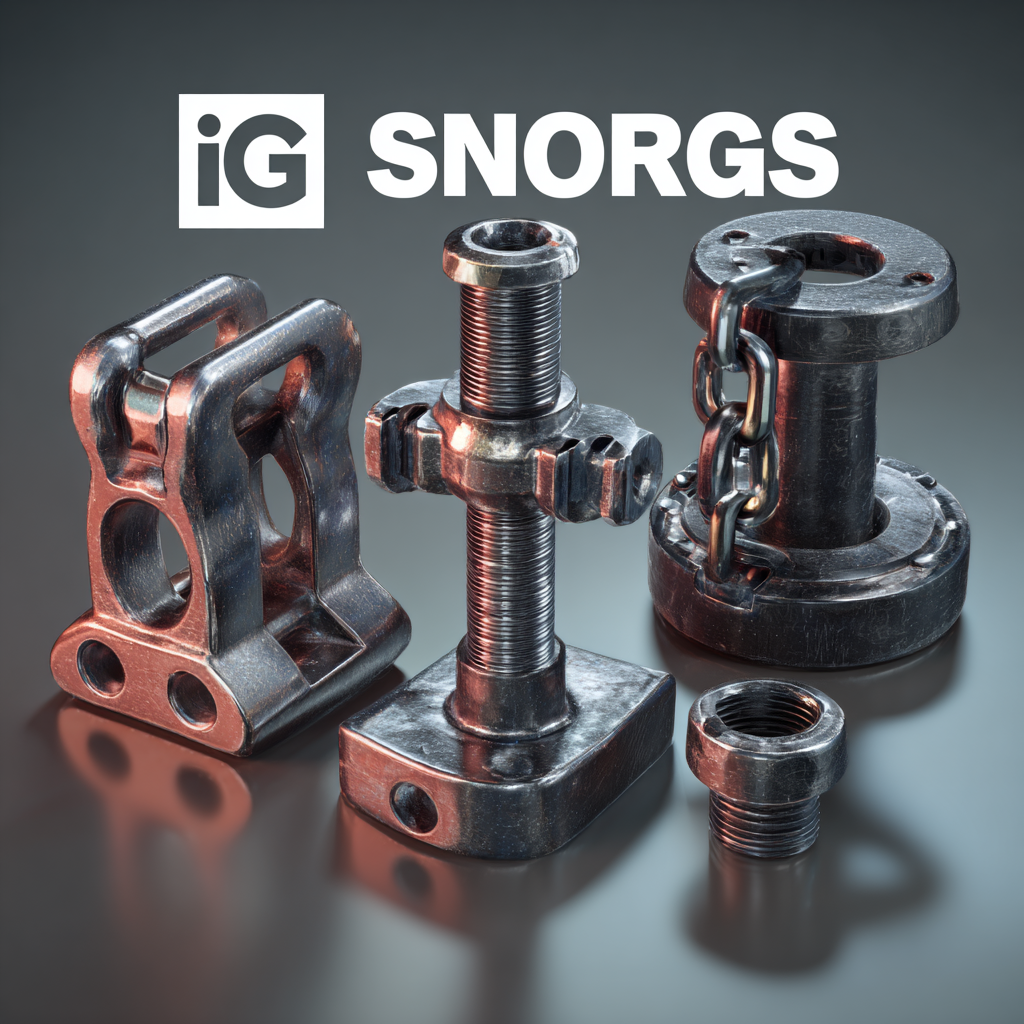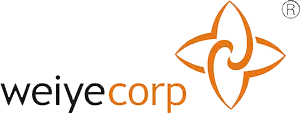Inquiry
Form loading...
In the competitive landscape of global markets, sourcing the best lifting anchors is crucial for ensuring safety, reliability, and efficiency in various applications. Lifting anchors are critical components in industries ranging from construction to maritime operations, and their performance can significantly impact project success. However, navigating the complexities of international trade, including compliance with export and import certifications, presents a unique set of challenges for manufacturers and suppliers alike. This blog will explore the top strategies for sourcing high-quality lifting anchors while addressing the necessary industry certifications that ensure these products meet stringent safety and quality standards. By understanding the intricacies of global sourcing and adhering to certification requirements, businesses can optimize their procurement processes and secure the best lifting anchors for their needs.

In the dynamic landscape of global markets, understanding the trends driving the lifting anchor industry is crucial for sourcing the best products. By leveraging data analytics, companies can identify emerging markets and shifts in demand, ensuring they remain competitive. For instance, regions experiencing rapid infrastructure development often see an uptick in the need for high-quality lifting anchors. Careful monitoring of these trends allows businesses to align their sourcing strategies with market demands.
Furthermore, analyzing data on customer preferences and performance standards can inform product selection. Companies should focus on the technological advancements in lifting anchor materials and designs, which can improve safety and efficiency. By staying attuned to global trends, such as sustainability and regulatory changes, businesses can better position themselves to source lifting anchors that not only meet but exceed market expectations. This data-driven approach ultimately fosters informed decision-making and supports long-term growth in the lifting anchor sector.

 When sourcing lifting anchors in the global market, evaluating material quality and compliance standards is paramount. According to a recent report by the International Organization for Standardization (ISO), adherence to established guidelines not only enhances safety but also improves overall efficiency in lifting operations. For instance, anchors made from high-strength steel, meeting ASTM A325 specifications, demonstrate higher durability and load-bearing capacity, which are critical for heavy lifting tasks.
When sourcing lifting anchors in the global market, evaluating material quality and compliance standards is paramount. According to a recent report by the International Organization for Standardization (ISO), adherence to established guidelines not only enhances safety but also improves overall efficiency in lifting operations. For instance, anchors made from high-strength steel, meeting ASTM A325 specifications, demonstrate higher durability and load-bearing capacity, which are critical for heavy lifting tasks.
Additionally, compliance with local and international regulations such as ASME B30.26 and EN 795 is essential in minimizing risks. A study by the Occupational Safety and Health Administration (OSHA) highlighted that more than 20% of workplace accidents involving lifting equipment are due to inadequate quality control measures. By ensuring that suppliers adhere to these compliance standards, companies can significantly reduce liability and improve safety outcomes. Furthermore, regular testing and certification of lifting anchors can provide verifiable quality assurance, giving end-users confidence in the products they utilize in their operations.
In the rapidly evolving global markets for lifting anchors, leveraging technology is paramount to staying competitive. Recent advancements in lifting anchor design and manufacturing are revolutionizing the industry, allowing companies to enhance safety, reliability, and efficiency. For instance, innovations such as suction anchors have emerged as vital equipment for deep-water mooring, playing a critical role in offshore energy development. These cutting-edge designs not only improve anchoring performance but also streamline installation processes, minimizing environmental impact.
Tip: When sourcing lifting anchors, consider evaluating suppliers based on their technological capabilities and the innovations they provide. Opt for companies that invest in research and development, as this often translates to superior product performance and compliance with international standards.
Furthermore, the integration of smart technology into lifting anchor systems is paving the way for automated solutions that increase operational efficiency. As seen in recent projects, the ability to monitor anchor performance in real-time can lead to significant improvements in project timelines and cost management.
Tip: Look for manufacturers offering smart lifting anchors equipped with IoT capabilities. These anchors will enable better data collection and analysis, helping you make informed decisions and optimize your lifting operations.
In today's competitive landscape, sourcing lifting anchors from emerging markets presents a unique opportunity to enhance cost-efficiency and improve overall profitability. According to a report by MarketsandMarkets, the lifting equipment market is projected to reach USD 23.3 billion by 2025, driven largely by the increasing construction activities in emerging economies. By tapping into these markets, companies can reduce their production costs significantly—often by 20% to 30%—compared to developed regions.
Emerging markets often offer lower labor costs and raw material prices, allowing manufacturers to offer competitive pricing without sacrificing quality. For instance, a recent study from Research and Markets indicates that sourcing lifting anchors from Southeast Asia can result in annual savings of up to USD 3 million for mid-sized companies. Additionally, with advancements in manufacturing technologies in these regions, the reliability and performance of lifting anchors have seen substantial improvements, thus minimizing the risks associated with lower-cost options. By conducting a thorough cost-benefit analysis, businesses can strategically assess when and how to source from these developing regions while maximizing their return on investment.
Building strong, strategic relationships with reliable suppliers in the lifting industry is essential for sourcing the best lifting anchors in global markets. A well-established supplier can ensure not only the quality of the products but also timely deliveries and dependable support. One tip for fostering these relationships is to engage in open communication. Regularly discussing your needs and feedback can help both parties align their goals and expectations.
Additionally, consider visiting suppliers’ facilities if possible. This face-to-face interaction allows you to build trust and gain insights into their operational capabilities. Being hands-on fosters a sense of partnership and shows your commitment to a mutually beneficial relationship. Another effective strategy is to invest in training and collaborative projects with your suppliers. This not only enhances product understanding but also encourages innovation, which can lead to more effective lifting solutions tailored to your specific requirements.
In conclusion, nurturing these relationships goes a long way in securing the best lifting anchors while ensuring that you remain competitive in an ever-evolving global market.
| Region | Supplier Type | Product Quality Rating | Lead Time (Days) | Customer Support Rating |
|---|---|---|---|---|
| North America | Manufacturers | A | 30 | 4.5 |
| Europe | Distributors | B | 25 | 4.0 |
| Asia | OEMs | A+ | 40 | 4.2 |
| South America | Distributors | B+ | 35 | 4.0 |
| Australia | Manufacturers | A | 28 | 4.3 |
